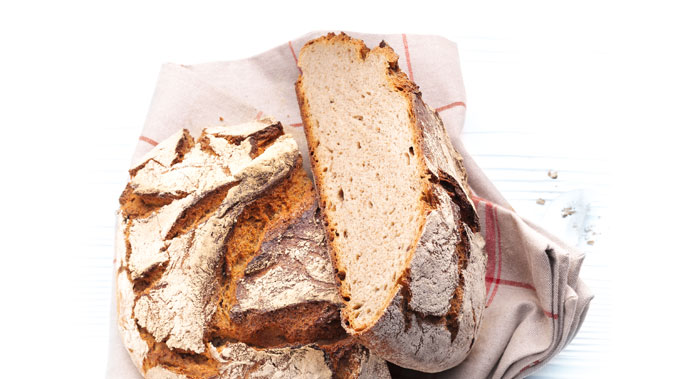Sourdough bread
 Miele
Miele
Sourdough bread
Crisp on the outside, soft on the inside and with a strong flavour – for more than 5000 years, the tiny bacteria and yeasts in flour and water have been responsible for creating this unique and enjoyable natural food.
As is so often the case, we have chance to thank for the creation of a new type of food. In ancient Egypt, someone left a bowl containing a mixture of flour and water standing around, instead of using it to bake bread. Wild bacteria and yeasts flourished in the mixture and made it ferment. Rather than throwing away the resulting dough full of air bubbles, the baker shaped it into a loaf and baked it. The result was a bread that was hard and crusty on the outside and soft on the inside. The secret of a good sourdough is the time that the dough is left to stand. If you don’t use a ready-made wheat, rye or dry sourdough starter, this can take a few days. On the first day you stir 100 g of rye flour into 100 ml of water. You then cover the mixture and leave it for a day at room temperature. After this it will smell slightly sour, because the lactic acid bacteria will have converted part of the sugar in the flour into acetic acid. The next day you add the same amount of flour and water and on the third day double the amount of both, in other words, 200 g of flour and 200 ml of water. On the fourth day the sourdough (800 g) is ready and can be mixed with the same amount of flour, shaped into a loaf and baked, after a certain amount of time for proving. The best type of oven is one with a moisture function. The combination of dry and occasionally moist heat produces a firm crust and a soft crumb.
You can make endless variations by adding grains, seeds, nuts and spices to the flour and water mixture. The lactic acid bacteria and yeasts, which are found in the air and also in the flour and water themselves, produce carbon dioxide that causes the dough to rise and become aerated. They also give the bread its aroma and taste. A loaf of this kind contains around 300 aromatic substances. The increased moisture and elasticity of sourdough make it more straightforward to slice. It is also easier to digest and lasts longer than “sweet” types of bread.
Bakers like Parisian Lionel Poilâne, who died in 2002, and his daughter Apollonia, Michael London in Saratoga Springs in the US state of New York and Paul Hollywood in Great Britain are just a few of the stars of the international sourdough scene, who share recipes, hints and tips on Internet forums all over the world.
And did you know that around 72.3 per cent of the 3177 breads listed on the German bread register (as of 17 November 2014) are sourdoughs and will hopefully soon appear on the UNESCO intangible cultural heritage list. The application has already been submitted.
(Rainer Meier)